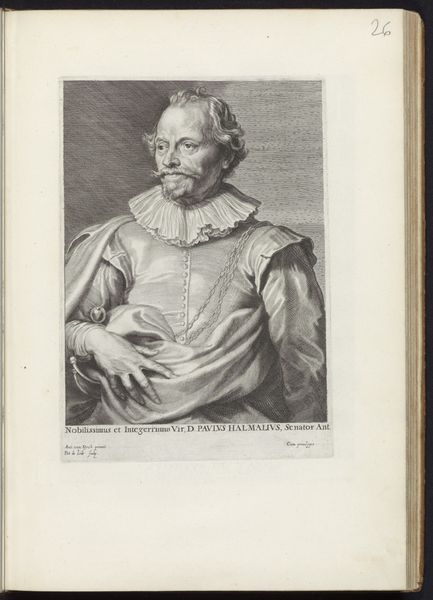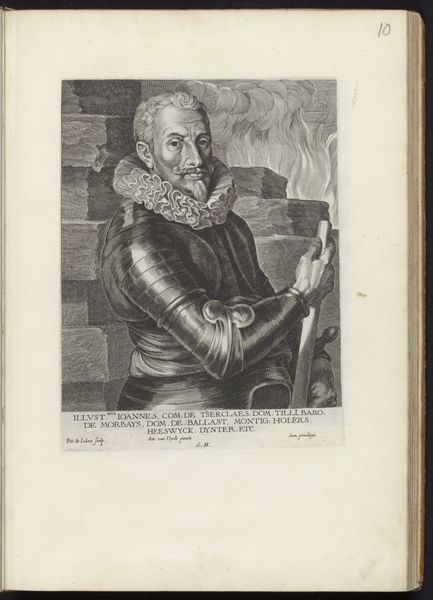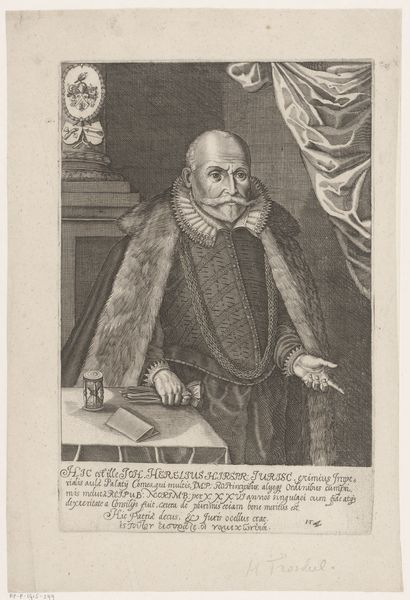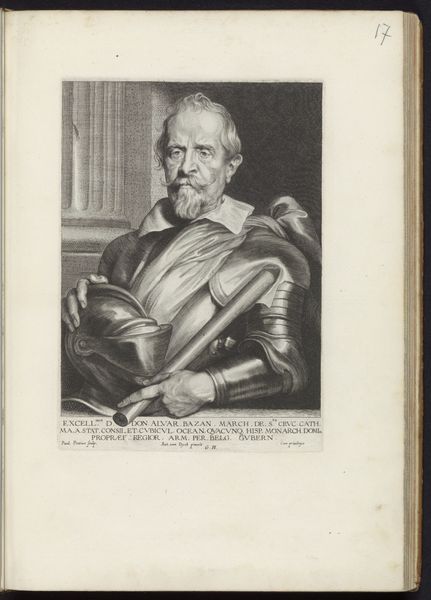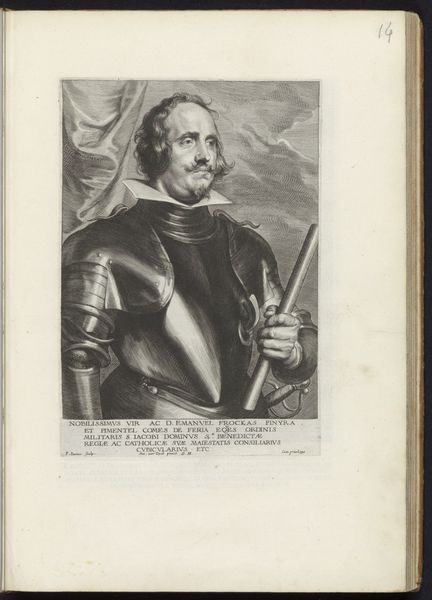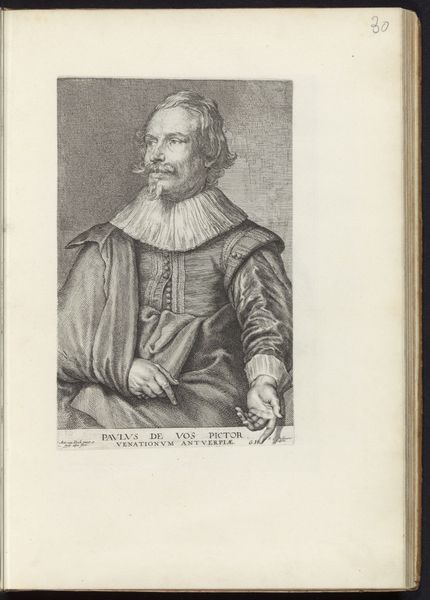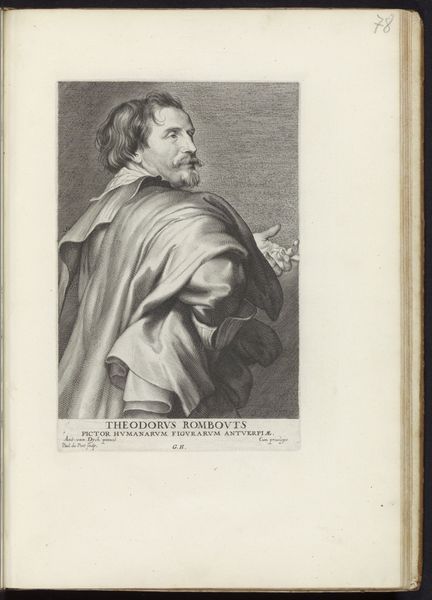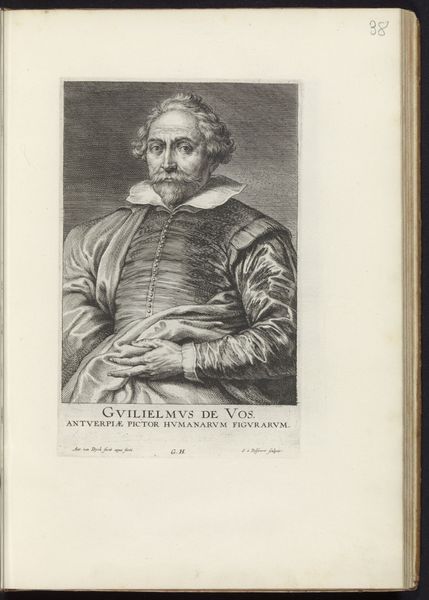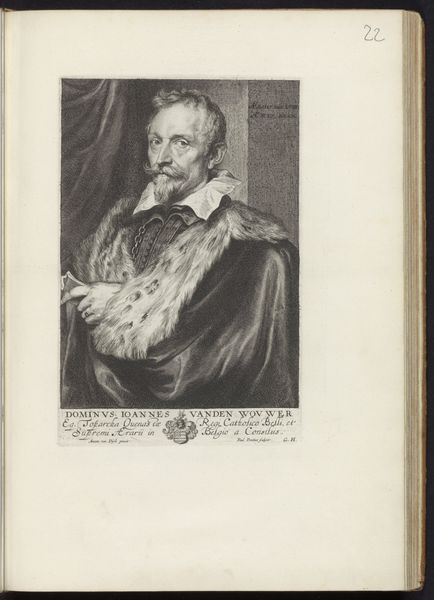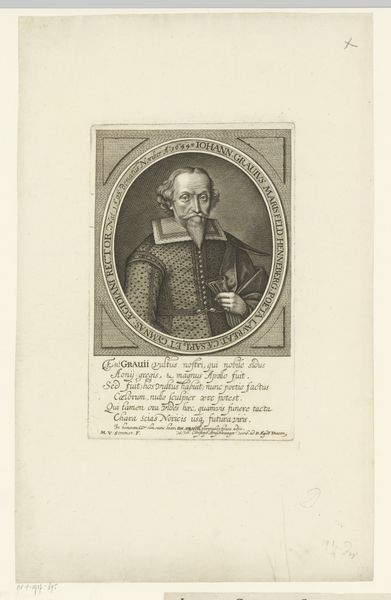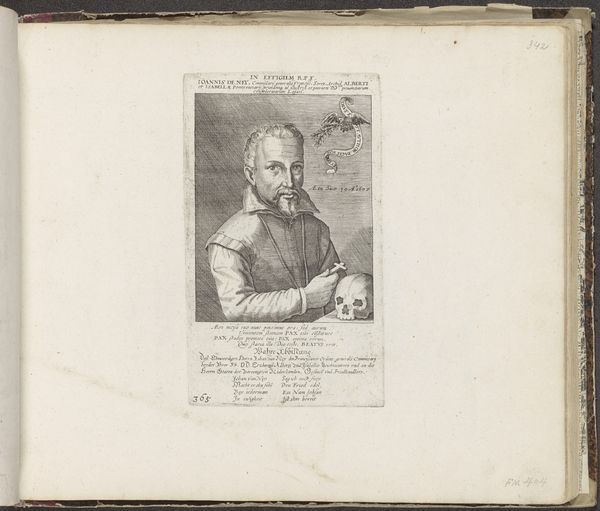
print, engraving
#
portrait
#
baroque
# print
#
old engraving style
#
portrait drawing
#
engraving
Dimensions: height 250 mm, width 179 mm
Copyright: Rijks Museum: Open Domain
Curator: I’m immediately drawn to the subject’s gaze in this engraving, "Portret van Cornelis van der Geest" by Paulus Pontius, likely created sometime between 1630 and 1646. There's a sharpness, almost a challenge, in his eyes. Editor: It does evoke a certain stoicism. What really catches my eye, though, is the crisp detail that Pontius achieves with the engraving medium. The ruff alone is a symphony of delicate lines and intricate texture. You can almost feel the starched linen. Curator: Absolutely. The ruff, while a sign of status, also acts as a sort of visual frame, directing our attention to van der Geest's face. But notice how his hands are positioned. They’re clasped, conveying perhaps a more introspective, guarded nature, a stark contrast to that initially piercing gaze. This pose creates psychological depth. Editor: Interesting point. From a socio-historical perspective, this portrait serves as a powerful statement about the importance of the individual in 17th-century Antwerp. Cornelis van der Geest, as an art collector, embodied a rising merchant class asserting its cultural authority through patronage and connoisseurship. The engraving then disseminates that image of power to a wider audience. Curator: Yes, it is designed to convey dignity and sophistication, to memorialize Van der Geest as more than just a wealthy merchant but also an aesthete and an intellectual. This representation elevates his personal brand as an 'amator' of the arts, to borrow the language of the inscription, in a world that greatly esteemed taste and refinement. Editor: Indeed. It’s a controlled performance of self. And, seeing this work here in the Rijksmuseum, it is itself evidence of his continued influence through collecting—as these public collections reflect private power and values over long spans of time. Curator: Exactly. Looking at the piece now, it's fascinating how this carefully constructed image continues to shape our understanding of not just an individual but also the societal values of his time. Editor: The ability of this portrait, centuries later, to facilitate understanding is evidence of art’s essential social role.
Comments
No comments
Be the first to comment and join the conversation on the ultimate creative platform.
